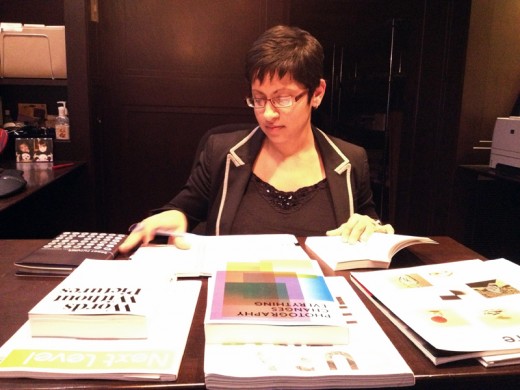About the Initiative
For much of its history, photography has pervaded our world, but never more so than today, when non-stop technological innovations make it ever easier to take photographs and share them instantaneously. There are over eight billion pictures on the social media site Flickr; photographs on the Internet appear for seconds and then disappear, lost in a pictorial “newsfeed.”
How does that affect their meaning? Our belief in their veracity? Our way of valuing them as keepsakes? And where in the midst of all these images and new technologies does art reside? What are the intellectual and aesthetic criteria by which we value photographs made with new means (for example, cell phones, computational photography) today? And how will we value those made by other means tomorrow?
Background
Supported by funding from the William T. Hillman Foundation, the Hillman Photography Initiative is a special project within the photography department of Carnegie Museum of Art that will offer an adaptable framework for engaging with these provocative issues. Favoring an approach that is experimental and open to new perspectives, the Initiative will be driven by the collaboration of five “agents,” consisting of four external experts and Carnegie Museum of Art curator Tina Kukielski, who is also co-curator of the 2013 Carnegie International. The Initiative will follow a 12-month cycle, beginning with an intense three-month planning period during which the agents will work together with program manager Divya Rao Heffley to identify a key theme that will inspire a wide range of activities such as exhibitions, programs, collaborations, and online experiences.
Nathan Martin of the innovation/design studio Deeplocal will facilitate the process. Following the planning phase, Kukielski and Heffley will work with other museum staff to manage the implementation of the activities over the nine months that follow. Rollout of activities is expected in early 2014, although some may begin more quickly. Additionally, the Initiative will co-sponsor and/or collaborate on related projects at the museum and with other institutions. The public will be able to track progress at initiative.cmoa.org.
Mission
With the rapidly evolving field of photography as its focus, the Hillman Photography Initiative will explore the intersections among artistic practices and technological research. It will further these explorations by supporting the development of projects that break down barriers to participation and encourage both insiders and the general public—onsite and online—to see the museum and photography in a new light.
The Agents
The first group of agents includes, along with Tina Kukielski, Marvin Heiferman, independent curator and writer; Alex Klein, program curator at the Institute of Contemporary Art, Philadelphia; Illah Nourbakhsh, professor of robotics and director of the CREATE Lab, Carnegie Mellon University; and Arthur Ou, assistant professor of photography and director, BFA photography, Parsons The New School for Design. The group will meet for the first time on April 21–22 to begin the development cycle.
At the close of each 12-month cycle, two external agents will remain, while the other two positions will be filled with new contributors, allowing for both continuity and the infusion of new perspectives.
The Structure
The structure for the Initiative grew out of a robust planning process. Approximately two years ago, the Foundation approached the museum with the idea of doing something distinctive in photography—an area of particular interest to William T. Hillman, an artist, collector, and longtime supporter of the museum. Rather than trying to replicate what others were already doing well, a team from the museum conducted in-depth research and benchmarking to explore the field and determine how the Initiative could add value and become a widely known center for innovation and excellence. Deeplocal’s Nathan Martin was engaged to assist with process design. To maintain maximum flexibility, the museum does not currently envision a bricks-and-mortar manifestation of the Initiative.
Photography at Carnegie Museum of Art
While the Initiative’s focus is primarily on the future, it is also deeply connected with the museum’s efforts to collect, conserve, and exhibit the entire breadth of the history of the medium.
In 1904, Alfred Stieglitz was invited to organize an exhibition at Carnegie Institute, establishing the museum as one of the first in the country to recognize photography as an art. More recent exhibitions include Digital to Daguerreotype: Photographs of People (June 20, 2009–January 31, 2010), which showed how photographers from the last 160 years explored the human subject through a wide range of artistic practices; Impressionism in a New Light: From Monet to Stieglitz (May 12–August 26, 2012), an exploration of the complex relationship between Impressionism and the Pictorialist movement in photography; and Yours Truly: Privately Collected Photographs (December 14, 2012–March 10, 2013), with vintage prints by some of the most outstanding photographers of the 20th century, including Brassaï, Henri Cartier-Bresson, Robert Doisneau, Alfred Eisenstaedt, Robert Frank, Weegee, and Garry Winogrand. Forty-six works from Yours Truly were announced as promised gifts to the museum from the collection of William T. Hillman, joining seven other works promised earlier in 2012.
Carnegie Museum of Art’s collection includes the Teenie Harris Archive of nearly 80,000 images, one of the most detailed and intimate records of the urban black experience known today. The museum’s groundbreaking 2011 exhibition Teenie Harris, Photographer: An American Story (October 29, 2011–April 7, 2012) was hailed as a “remarkable accomplishment” by the Wall Street Journal and praised by numerous other outlets regionally and nationally.

